Digital Marketing in 2022: Data-Driven Strategies
In 2022, marketers will use all available data sources to capture customer information and build profiles. They will integrate call tracking and other data into their marketing strategies to target customers more accurately. And they will use artificial intelligence to predict consumer behavior.
The following trends are expected to shape the future of digital marketing:
1. Data-driven marketing
2. Customer-centricity
4. Call tracking
5. Personalization
Marketers Tapping into More of Their First-Party Data
Marketers increasingly rely on first-party data to help them better understand their customers. This is especially true in industries with much customer interaction and personalization. In fact, according to Forrester Research, marketers are expected to spend $20 billion on first-party data in 2018.
Third-party data continues to play an essential role in marketing, but marketers should pay close attention to how much information companies like Facebook and Twitter collect about their consumers. They might find out something about their customers they didn’t know before. First-party data gives marketers an edge over competitors because it allows them to make decisions based on what they already know about their consumers. If you know someone who likes to buy shoes online, you can use that knowledge to suggest specific products.
Increased Touchpoints Involved in the Buying Journey
Consumers expect brands to provide a consistent brand experience across multiple touchpoints, including mobile apps, social media channels, email marketing, webpages, and even voice assistants. As consumers become increasingly aware of how they engage with brands, it’s essential to understand where they’re spending their time and what actions they take during each stage of the buying journey. A recent study found that half of the consumers use voice assistants such as Amazon Alexa and Siri to research products and make purchases. So, it makes sense that marketers would start thinking about incorporating voice into their digital marketing strategies.
Voice assistants are becoming a significant part of our daily lives. They’re used to finding information, shopping online, playing games, answering questions, and more. Marketers must adapt their messaging and campaigns to appeal to this growing audience. For example, you might want to consider creating a custom skill for your brand that allows consumers to ask questions directly to your brand. You could also integrate your product listings onto third-party sites like eBay, Amazon, and Walmart. These integrations allow consumers to purchase items without having to open another app. You can also develop a campaign that uses voice assistants to help educate consumers about your brand. For instance, you could send out messages via Facebook Messenger asking people to try your latest product. Your brand could also offer discounts based on the number of times someone interacts with your brand via voice assistant.
The bottom line is that there are many opportunities to leverage voice assistants in your digital marketing strategy.
Consumers Have Higher Expectations for Personalization
Personalization is no longer about delivering relevant ads based on what you know about me. Today consumers want personalized experiences across all marketing touch points—mobile, social media, email, web, physical stores, and beyond. Therefore, marketers are now focusing on creating a consistent experience across every channel and device. But it isn’t enough to simply deliver an excellent product; customers want to feel like they’re part of something bigger. They want to see themselves reflected in how brands interact with them.
In fact, according to a recent survey conducted by Accenture, half of US consumers say they’d instead purchase from a brand that offers them “personalized recommendations” rather a one offering them “recommendations.” And while most people understand the value of personalized advertising, they still aren’t sure where to find it. Almost 60% of respondents don’t think they’ve seen personalized messaging in a retail setting.
So, what does this mean for marketers? It means we need to start thinking about our digital marketing strategies holistically. We must focus on creating a single customer journey across all channels and devices. To do this, we must ensure that each element of the customer’s journey feels tailored to address specific needs and preferences. This includes everything from how products are displayed online to the promotions that entice shoppers into buying. When done well, this creates a cohesive customer experience that makes customers feel like they belong to a larger group.
The key takeaway is that today’s consumers want to feel like they’re being treated as individuals. So, whether you’re selling cars, shoes, or insurance, you must ensure that your messages reflect this desire for personalization.
Brand Loyalty Is Fading
In 2017, brand loyalty was waning among consumers. A recent study from Accenture found that millennials are less loyal to brands than previous generations, and half of the respondents said they would switch brands if they had a better deal. This shift in consumer behavior is having a significant impact on marketing budgets. For example, according to eMarketer, global digital ad spending will grow by 4.8% over the next five years. However, traditional media advertising — print, radio, TV, etc. — will decline by 5.3%. Digital ads will increase by 7.6%, while conventional ads will decrease by 3.7%.
This trend toward greater competition and declining brand loyalty is particularly evident in retail. Consumers are becoming increasingly price sensitive, and retailers are responding by offering discounts and promotions to attract shoppers. As a result, brick-and-mortar stores see sales decline. The good news is that many companies are already taking steps to address these challenges. They focus on providing a seamless customer experience across multiple channels and building relationships with customers through personalized experiences. And they are making sure that every touchpoint offers value to customers.
AI and Marketing Automation Is the Future
AI and machine learning are changing everything about how marketers do business. Artificial intelligence is predicted to transform every industry within the next decade.
- But what does that mean for marketers today?
- How will AI impact our jobs?
- And most importantly, how can you use AI to improve your customer experience?
As AI becomes more pervasive in marketing, businesses will be able to automate tasks such as content creation, search engine optimization, and email campaigns. These tools are great for small businesses that have limited resources. But they also provide immense opportunities for large organizations to outsource their marketing functions.
For example, Google has made strides in automating its search engine results pages (SERPs). If you search for something on the internet, you’ll notice that certain links appear higher on the list than others. That’s because an algorithm behind the scenes determines which sites get featured at distinct positions. While this process doesn’t always produce perfect results, it allows Google to create relevant content quickly and efficiently. The same goes for other types of content, including blog posts, videos, social media posts, etc. Today, we use automation to help us manage the massive amount of data generated by our online interactions. We use AI to analyze that data to identify patterns and trends that might not otherwise be apparent. Then, we apply those insights to make informed decisions about future actions.
For example, if you’ve tried searching for flights using Kayak or Expedia, you know that prices fluctuate based on real-time market conditions. Both present websites with information about available travel options, but they differ in how they determine the best deals. Expedia uses algorithms that look at historical pricing trends to find the lowest fare. On the other hand, Kayak relies on predictive modeling to anticipate demand and set prices accordingly.
In both cases, AI helps them understand consumer behavior and adjust their strategies accordingly. By applying that knowledge to new situations, they can continue to offer better service while saving time and money. As AI continues to evolve, it will become even more intelligent and capable of handling complex tasks. Eventually, we won’t need humans to perform some of these operations. Instead, machines will take over. Marketers’ biggest challenge isn’t creating compelling messages or developing effective ad campaigns. It’s finding ways to leverage technology so that they can scale their efforts and succeed at speed required to stay competitive.
Web Analytics Data
Web analytics helps you understand how visitors use your site. You can gather information about what your audience does while on your site, where they go, how often they come back, and whether they buy something. This data gives insights into how well your marketing campaigns work and allows you to make changes to improve your performance.
There are several types of web analytics software programs. Some are free, some cost money, and others are paid subscription services. Here are three popular options:
Google Analytics
This tool provides detailed reports and graphs that show traffic patterns, visitor behavior, and conversion rates. You can set up goals to track specific actions such as adding products to the cart, filling out forms, or signing up for newsletters. For example, you could measure the success of a particular email campaign by tracking the number of emails opened and clicked on.
Facebook Insights
With Facebook Insight, you can view statistics about your fans and followers, including demographics, interests, and behaviors. You can use it to find out who your most engaged audiences are and determine which posts generate the highest levels of interaction.
Transaction Data
The marketing industry has been talking about customer insights for decades; however, it wasn’t until recently that businesses realized the actual value of transaction data. In fact, according to Forrester Research, “transaction data provides far richer insight into consumers’ attitudes and behaviors than traditional demographic data.
Transaction data includes purchase history, product reviews, and social media activity. This information gives companies a unique opportunity to learn more about their customers. However, many businesses are still struggling to make sense of this data. There isn’t one way to collect transaction data, and each method has its pros and cons.
For example, some transactions might include credit card numbers, while others might use loyalty cards. Some retailers offer discounts based on previous purchases, while others give rewards for every dollar spent. These differences mean you’ll need to look at several types of transaction data to find what works best for your brand. However, there are ways to combine multiple data sources to gain even deeper insights. Here are four tips to help you start getting the most out of your transaction data:
Focus On Customer Experience
The customer experience (CX) refers to the overall impression a company leaves on its customers. It’s not just about the quality of products or services. Instead, CX involves everything from the design of an online shopping cart to the speed of checkout processes. The goal is to create a positive experience for all customers, regardless of their demographics.
To improve your CX, focus on improving the following areas:
• Mobile UX/UI Design – Ensure your website is optimized for desktop computers and smartphones.
• Online Shopping Cart Design – Create a seamless user experience when someone buys something on your site.
• Checkout Process Speed – Improve the time it takes for customers to complete their orders.
• Social Media Optimization – Use social media to communicate directly with customers.
• Loyalty Programs & Offers – Offer incentives to encourage repeat business.
• Cross-Channel Engagement – Create a consistent message across channels, so customers don’t feel lost.
To get started collecting and analyzing transaction data, try these two simple steps:
1. Set Up Goals
2. Track Conversions
Organic Search
More than 80% of people use the internet every month. And according to Statista, there are about 2.5 billion active mobile devices worldwide. In addition, Google owns 90% of the market share. So, what does this mean for you? You’re wondering how much money you could make if you took over those numbers. Well, let me tell you something. It’s a lot of money.
We’ve researched how much money you could earn per day by optimizing your site for search engines like Google and Bing. We found that ranking high in Google and Bing is easy, primarily if you focus on long-tail keywords.
Let’s look at three main strategies:
- How to optimize your site for search engines
- How to find profitable keywords
- What makes a good landing page
Step 1 – How to Optimize Your Site for Search Engines
First things first, you need to understand how search engine algorithms work.
Google uses a complex system of mathematical formulas called PageRank (PR) to determine which websites appear at the top of their results. PR is calculated based on web page backlinks—the number of other sites linking to yours.
Each webpage gets a score based on several factors: the quality and quantity of these backlinks, the content of each page, and so forth. These scores help Google decide which website should be ranked higher.
Step 2 – What Makes a Good Keyword
Keywords are words or phrases that people type into an online search engine. The more people search for a keyword, the more likely they are to click on your ad. But remember, even though most customers will only see the first few results from any given query, those who click on the first result are less likely to buy from you because they may not have clicked through to your website.
So, while users search for something, your ads must appear near the top of their list. But you also want them to click on your ad, which leads to higher conversions.
To help you choose the right keywords, here’s some advice:
1. Find out what your competitors are doing
2. Use tools like Google Trends to find popular queries.
3. Make sure your site has excellent content and relevant links.
4. Test different keywords until you find one that performs well.
5. Keep track of your KPIs (key performance indicators) over time.
6. Measure your ROI (return on investment). Do More with Less – A Simple Guide to Content Strategy
Step 3 – Writing Copy That Works
What do I mean by copy? It’s all about writing content that works for your target audience. You might think this is as simple as using the same language and tone potential buyers use when talking to each other. But there’s much more to it than just creating unique copy that resonates with consumers.
Here are a few tips for crafting irresistible messaging that converts visitors into customers.
Write For Humans First — And Then Go Back to Robots
People don’t read; they scan. So, your best bet is to create content that grabs readers’ attention quickly. This means getting to the point fast, keeping sentences short, and eliminating fluff. You can test this theory by reading customer reviews on Amazon or Yelp, and people tend to write more concise reviews as they get increasingly engaged with the product or service.
- Make Sure Your Audience Knows Why They Should Buy from You
If you’re selling products, make sure your copy tells customers why they need to buy from you instead of your competitors. If you’re offering services, tell prospects how much money they’ll save or how easy it will be to accomplish tasks.
Use bullet points and bold text to highlight essential information.
- Use Headlines That Grab Attention
Headlines are often written as if they were headlines in newspapers, but they work differently in digital media. Instead of using the word “you,” start a headline with a verb. For example, “Get 10% Off Your Purchase” isn’t very compelling compared to “Save $10 on your purchase.”
- Avoid Using Exclamation Points!
Exclamation points are used to show excitement, urgency, or enthusiasm. But when it comes to marketing, ex.
Search Marketing Statistics
The internet generates over $30 billion in annual revenue for search engines like Google and Bing. While there are many ways to optimize your site for search, it’s crucial to understand how much money you could make off every visitor.
Here are some key statistics about search marketing:
• There are over 2 trillion searches performed per year worldwide
• Around half of those searches happen in the United States alone
• Almost 60% of mobile traffic comes from searching
• People spend around 10 minutes on average on a search engine
• Users tend to stay longer on sites that rank high in search results
• Mobile devices account for almost 80% of all web traffic
Mobile Search
The number of mobile searches grew from 5% to 10% in just one year, and in 2017, it hit 20%. And now, most people use their smartphones to make purchase decisions, and this trend is expected to continue. By 2020, half of all online sales will come from mobile devices.
Smartphone usage is already impacting how shoppers shop. A study found that smartphone owners browse product reviews before buying products. They also prefer to purchase items while standing in stores rather than sitting down.
Local SEO
Local Search Engine Optimization (LSEO) is essential to any regional marketing strategy. Mobile users are more likely to buy products and services locally than online, making optimizing your site for local searches even more critical. If you want people to find your store or restaurant, you must ensure your site appears high up in local search rankings. A few simple changes can do wonders for your business. Start by providing your address, phone number, website URL, hours of operation, and other details that appear correctly on your site. Make sure these details are accurate and consistent across multiple pages. Use Schema markup tools to ensure you’re using standard codes.
You should also include a map on your site so people know exactly where you’re located. Include links to directions, driving times, weather forecasts, and other details. Finally, be sure to list nearby competitors.
Voice Search
Voice search is becoming increasingly popular, especially among younger generations. More than half of the world’s online population already uses it. Experts predict that by 2022, 50% of all searches will be performed via voice. So how does this affect local businesses? Voice search is going to open new opportunities for brick-and-mortar stores. More specifically, consumers can ask Alexa to order items, place orders, check out, and pay at checkout.
This means that retailers need to adapt to the changing landscape, and it also means they must invest more time and money in developing apps. One way to build trust with consumers is to use customer reviews. People are much more willing to give feedback if they feel confident that their opinion won’t go unnoticed.
Content Marketing Statistics
- 70% of consumers say they would instead learn about a company through articles than ads. (Source: Content Marketing Institute) –
- 82% of consumers say content that’s easy to read is more important than high-quality content. (Source: Content Marketing Institute) –
- 43% of consumers say they are more likely to buy from a company that produces custom content. (Source: Custom Content Council) –
- 67% of B2B buyers say their decision-making process involves reading a lot of material. (Source: CMI) –
- 60% of consumers say they have made a purchase because of a recommendation from another person. (Source: CMO Survey) –
- 78% of consumers say they will purchase after viewing a video ad. (Source: AdWeek)-
- 83% of consumers say they prefer social media posts over email newsletters. (Source: Content Marketer Report) –
- 80% of marketers say they are currently using some form of content marketing. (Source: HubSpot)
As you can see, there are plenty of reasons why content marketing is essential for small businesses. The key is finding ways to create great content while balancing the needs of your business. Several types of content are available, including blog posts, videos, infographics, and podcasts. Each offers different benefits, but each requires work to produce.
With that said, here are five tips for creating great content.
1. Know What You Want to Say
Your goal is to provide value to your customers. But before you start writing or recording anything, you need to know what value you want to offer. Start by brainstorming ideas and write down as many as possible. Then narrow them down until you have only one idea left. This is known as “brainstorming.” When you do this exercise, don’t just focus on the product or service you sell. Instead, think about what you’d like to learn from the customer. Next, decide whether you want to tell stories that entertain, inform, educate, persuade, or inspire. And finally, consider whether you’re trying to communicate in English, Spanish, or any other language.
2. Make Sure Everything Is Written Properly
Now that you understand what kind of information you want to share with your audience, it’s time to put pen to paper or finger to microphone. Before you begin recording, make sure everything is written properly. For example, if you’re speaking into a recorder, remember to record with pauses between sentences. If you’re writing something down, make sure every word makes sense. Also, include punctuation and capitalization. These things may seem insignificant, but they add up.
3. Create An Interesting Topic
Once you’ve completed the first step, it’s time to choose an exciting topic. There are several ways to find topics, such as talking to customers, looking at your competitor’s websites, and analyzing trends in the industry. However, most people tend to stick with what they know best. That’s fine if you take advantage of your unique perspective. Even better, try to avoid being too specific. Topics that are too detailed or specific risk boring your audience.
4. Use Visuals Whenever Possible
When creating content, remember that the average attention span today is eight seconds. So, you’ll want to use visuals whenever possible. This includes images, charts, graphs, maps, and diagrams. They help break up the text, which allows readers to absorb more information.
5. Focus On Your Audience
Finally, when you’re ready to publish your content, focus on your audience. Who are you talking to? Are you writing specifically for your target market? Or are you writing for everyone? Keep these questions in mind as you create content.
Content Marketing Strategy
Without a well-thought-out content strategy, you won’t know what type of content works best for your audience. You’ll waste money creating content that doesn’t convert and miss opportunities to connect with prospects. Therefore, it’s essential to have a plan when developing a content strategy.
Your target audience may consist of distinct groups of people with varying interests and needs. Consider the following questions:
- What do my buyers want or need?
- Do I offer products or services that meet their needs?
- Who are my ideal customers?
- Are there specific demographics in which I’d like to attract attention?
- What is the purpose of my content?
- Is it meant to inform, educate, entertain, sell, or persuade readers/viewers?
- How many pieces of content should I create?
You may need to create one or several types of content depending on your goals. For example, if you’re trying to increase sales, you might focus on providing educational content such as white papers. If you’re looking to generate leads through website traffic, then you could write articles about topics related to your business. To determine the number of pieces of content needed, you can refer to the following guidelines:
Know Your Goals
Before you begin creating content, make sure you understand your overall objective. Once you’ve determined your goal, you can decide which kind of content will help you achieve it. Here are some examples of common objectives for businesses:
Informational — This includes posts that provide details about something (e.g., a new product).
Educational — This includes posts meant to teach consumers how to perform specific tasks (e.g., how to use a computer).
Promotional — This includes posts that encourage consumers to act (e.g., “Buy now!”)
Entertaining — This includes posts that include humor or jokes.
Sales — This includes posts designed to convince readers to buy from you by offering compelling reasons why they should.
Persuasive — This category covers posts that aim to influence others’ opinions or behavior.
Influencer — Some companies use influencers to promote their brand. These individuals have large followings online and can spread awareness quickly.
Social media sites are great tools for getting the word out about your company. They allow you to interact with existing followers and let them share information with friends and family. However, you don’t just want to put up fluff; you must also produce quality content. Quality content means being informative while still entertaining or educating your readers. In addition, you must be able to measure your results to track whether your efforts are working.
Types of Content
There are three basic types of content: text, images, and videos. Each has its own set of pros and cons. Let’s look at each.
Text
Pros:
• Easy to read
Cons:
• Difficult to update
Images
Pros :
• Easier to update than text
• Attracts the eye
• Makes your message more memorable
Cons :
• May require additional work
• Requires time to create
Videos
Pros :
• Videos can communicate complicated ideas simply
• Can attract attention
• Help viewers see themselves inside the story
• Make your content seem more credible
Cons :
• Requires time and effort to create
• Requires technical expertise to execute well
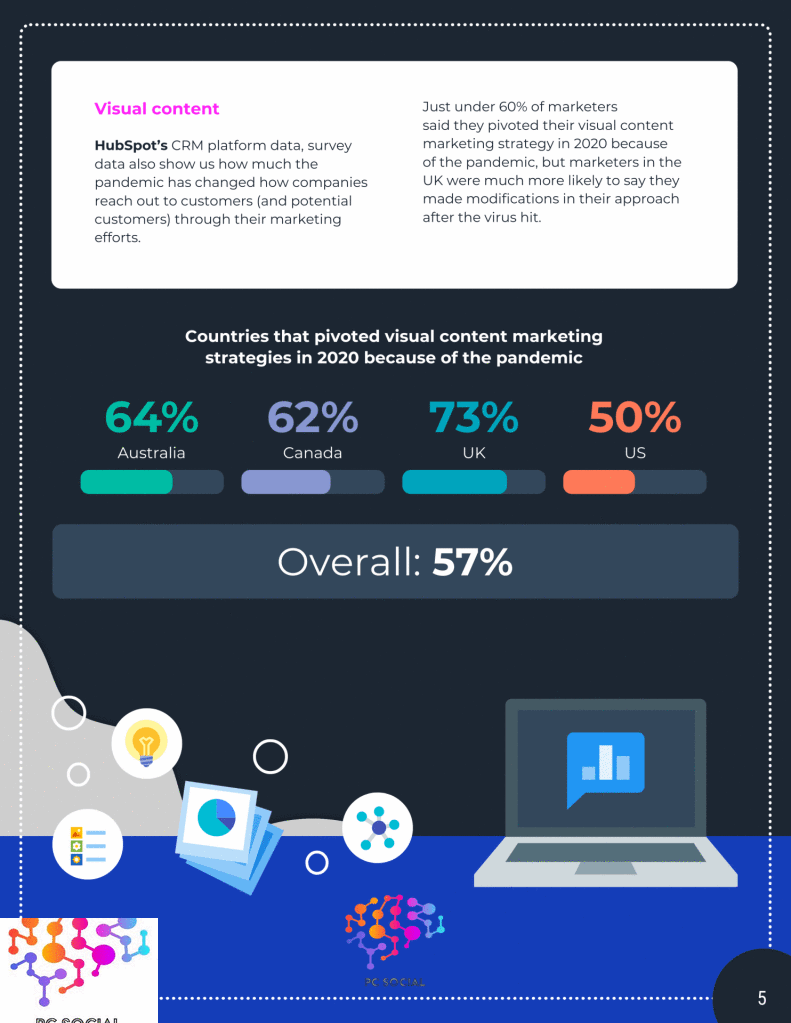
Choosing How Much Content You Should Produce
After you know your goal, choose what type of content you’ll create, how much you’ll create, and where you’ll post it. The amount of content you produce depends on several factors, including:
- Your budget
- How many products or services you offer
- The size of your audience
- What else is competing for your audience’s attention
- Your industry
- The type of content you plan to create
You won’t need to publish often if you sell only one or two products. But if you operate a service business, you may need to provide updates frequently. Will you be publishing a lot? If so, schedule your posts around peak times—when most people are online. Otherwise, you may not get enough views to make your content worthwhile.
Will you be creating multiple pieces of content? It typically makes sense to focus on a few distinct kinds of content rather than trying to do too much in one piece. That way, you’ll give yourself room to experiment with innovative ideas before committing to something big.
Will you be producing original content or reusing content you’ve created elsewhere? Reusing content saves time but limits the scope of your strategy. If you decide to reuse content, link back to the source so people will click through to it.
When planning your content marketing strategy, think about all these factors. Don’t forget to consider your audience as well.
- What would they like to hear about?
- What topics do they care about?
Once you know who you want to reach and what they want, you can get started on your content strategy.
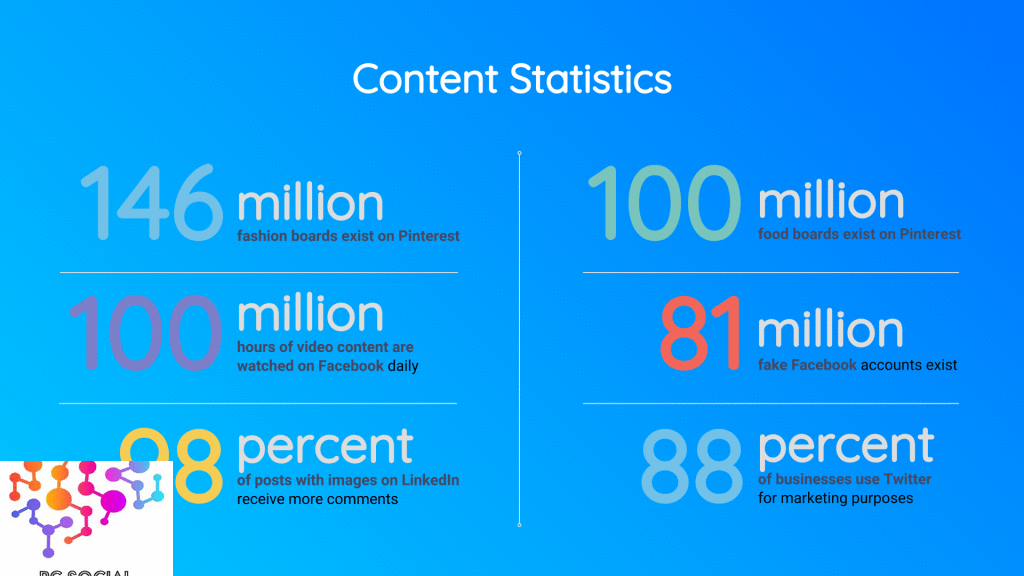
Video Marketing
82.8% of internet users watch digital videos monthly, which is expected to grow to 87.4 percent by 2021. It’s predicted that over one billion hours of video will be watched annually by 2022. Video is becoming increasingly important in marketing campaigns, and marketers can now use video messaging in Nurture Campaign emails to connect directly with customers.
31% of marketers use video in Nurture Campaign email messages. While most marketers aren’t sure what to do with the video, experts say it will become even more popular. There are many reasons why videos are being used more often in Nurture Campaign messages. For example, studies show that people prefer watching videos over reading text. Another reason is that video helps brands build trust with consumers. And finally, video is proven to increase open rates and click-through rates.
Experts predict that more than one million videos will be online by 2020. By 2022, over one billion hours could be spent watching videos each month. Marketers will continue experimenting with different video content types as we move closer to this prediction. However, today, the most successful videos are those that tell stories, make a connection with audiences, and help businesses gain brand awareness.
Data-Driven Marketing
Data-driven marketing is one of the most effective ways to reach your audience. This method relies heavily on data analysis to determine what works best for you. Data-driven marketing uses customer behavior and interaction patterns to make strategic decisions about your brand. More than half of marketers believe data-driven marketing strategies are critical to achieving better results. Marketers who use data-driven marketing tactics see an average ROI of 8x compared to those who do not.
According to a study by Forrester Research, more than 50% of marketers spend around $16 per day on marketing analytics tools. However, according to another survey, only 15% of companies track their campaigns’ performance. The amount of money spent on marketing analytics is expected to increase over the next few years. A report published by eMarketer predicts that spending on marketing analytics tools will grow from $1.6 billion in 2017 to \$3.2 billion by 2022.
In addition to helping you measure the success of your digital marketing efforts, data-driven marketing statistics can help you identify opportunities for improvement. You can learn where your target audiences are coming from, which channels are most effective, and how your current messaging compares to your competitors. These insights allow you to make smarter decisions about your future marketing plans.
In 2018, over 2 billion data records were generated worldwide, which is expected to increase exponentially in the coming years. Data quality is one of the most critical challenges facing businesses today, and it is the single most significant barrier preventing companies from achieving success with big data initiatives.
The good news is that many solutions exist to help solve this problem. However, many organizations don’t realize how much work is needed to improve data quality. They’re unaware of the tools available to enhance data quality and don’t know where to start.
This report provides insights into the current state of data quality across industries and highlights some key trends. We’ll look at why data quality is such a challenging issue and explore ways you can use data to achieve tremendous success. The marketing industry is still struggling to figure out what works best. According to a recent survey by HubSpot, 68% of marketers say they want to improve the measurability of return on investment (ROI). A whopping 9 percent of respondents said improving ROI was one of their top priorities.
But many marketers aren’t sure how to go about achieving this goal. Only 27% of marketers surveyed ranked their understanding of attribution statistics as “excellent,” while another 12% rated it as “very poor.” And over half of marketers (55%) said they struggled to find qualified staff to help them.
In addition, 44% of marketers said they felt overwhelmed by the amount of incoming information. Almost three-quarters (73%) said they needed better tools to analyze the data they were collecting.
A lack of understanding of attribution statistics keeps companies from making effective decisions. For example, marketers often spend too little on offline channels because they don’t know whether those efforts produce results. And marketers who do invest in offline channels often make ineffective investments. They might buy expensive print ads, for instance, without knowing whether they’re reaching their target audience.
Attribution statistics can be broken down into two main categories. First is the attribution model, which categorizes online and offline interactions according to their impact on sales or conversions. Then there’s the attribution statistic, which calculates the value of each interaction based on the attribution model.
At its core, attribution statistics determine whether an effort has been successful.
For example, if you run a Facebook ad campaign promoting a new product, you would like to know which campaigns have worked so you can continue running similar campaigns. You could also compare the performance of various advertising channels to determine which channel generates the most leads or purchases. Or you’d like to evaluate the effectiveness of specific content marketing strategies. In this case, you’d need to identify which posts are getting the most engagement and then calculate the number of unique visitors that click through to your site after reading a particular post. These are just some examples of how marketers use attribution statistics. But the fact remains that marketers don’t understand these metrics well enough to make informed decisions.
As a result, marketers often spend money on ineffective offline campaigns or inefficient online channels.
Digital Media: Engagement Statistics
Once a campaign has launched, marketers must track its progress. You need to understand how effective your branding efforts were. And you want to ensure that your ads reach the right audience. To do so, you’ll need real-time engagement statistics.
Engagement metrics are measurements that tell you how much interest your ad generated. This includes clicks, impressions, reach, and conversions (e.g., sales).
Clicks indicate that someone was interested enough in your ad to click it. Impressions represent the number of times your ad appeared on a page. Reach refers to the percentage of users who saw your advertisement. Conversions refer to actions taken by visitors after viewing your ad.
Some companies collect stats based on the interaction between a user and an ad. In this case, “interaction” may mean anything from clicking through to downloading a file. It’s important to note that each company defines what counts as an action. So, be careful when comparing numbers across different vendors.
Facebook is the world’s largest social network, with 1.2 billion monthly active users worldwide. The platform offers a variety of options for measuring ad performance, including click-through rates, cost per click, average position, and total reach.
Twitter is another major player in the digital advertising space. Although Twitter offers analytics tools, it doesn’t provide as many detailed reports as Facebook. Instead, Twitter uses a simple dashboard to display key metrics like impressions, unique users, and reach.
YouTube is yet another popular option for advertisers. Like Twitter, YouTube provides limited reporting features; however, it does offer a way to measure video views, watch time, and comments.
Google Analytics collects data for all websites. It allows you to view information about where people came from and how they got there. Google Analytics can help you see which pages get more traffic and which ones generate more revenue.
This tool gives you access to a wealth of data, but not all of it is ready for immediate consumption. For instance, you won’t find any data related to mobile devices until you install their app. Once installed, however, Google Analytics will give you detailed insights into app usage and website visits.
Sites like Moz and Alexa rank websites according to popularity. They also include other valuable metrics, such as referral sources and search engine optimization (SEO) factors.
In addition to tracking the success of individual campaigns, marketers also analyze trends over time. They look at how conversion rates change throughout a campaign. They might compare how specific demographics perform compared to others. They might even investigate whether the same type of content performs better in one region than another.
Conclusion
In conclusion, it is evident that data-driven marketing is here to stay and will only become more prevalent in the coming years. As increased businesses rely on data to make decisions, marketers need to be well-versed in statistical analysis and data interpretation. With the proper skill set, you can make a valuable contribution to your company’s marketing efforts and help drive ROI.
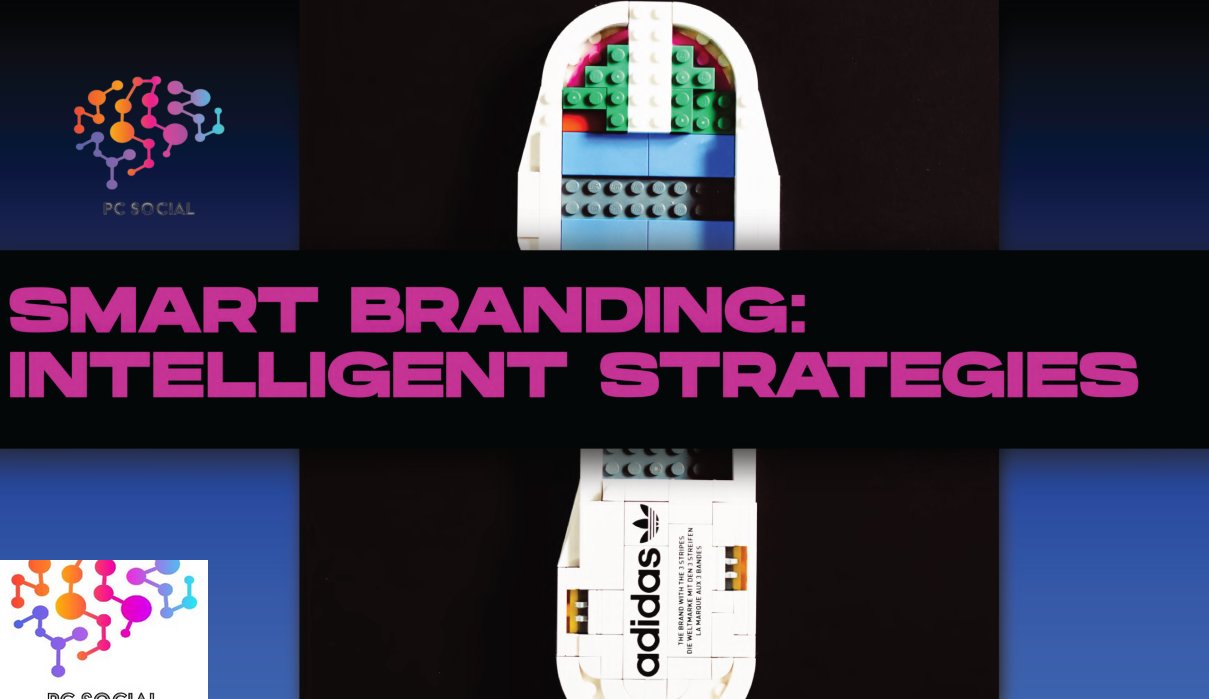
Smart Branding: Intelligent Strategies
Smart Branding: Intelligent Strategies What Is a Brand? A brand is the promise that you make to your users. Your brand is the promise that you make to your customers. It is …
2022
March 01

Data-Driven Marketing: The Benefits of Relevant, Personalized Experience
A guide to digital marketing with data. Learn how to use data analytics, social media & more to find your audience and market successfully in the digital age.
2021
December 03
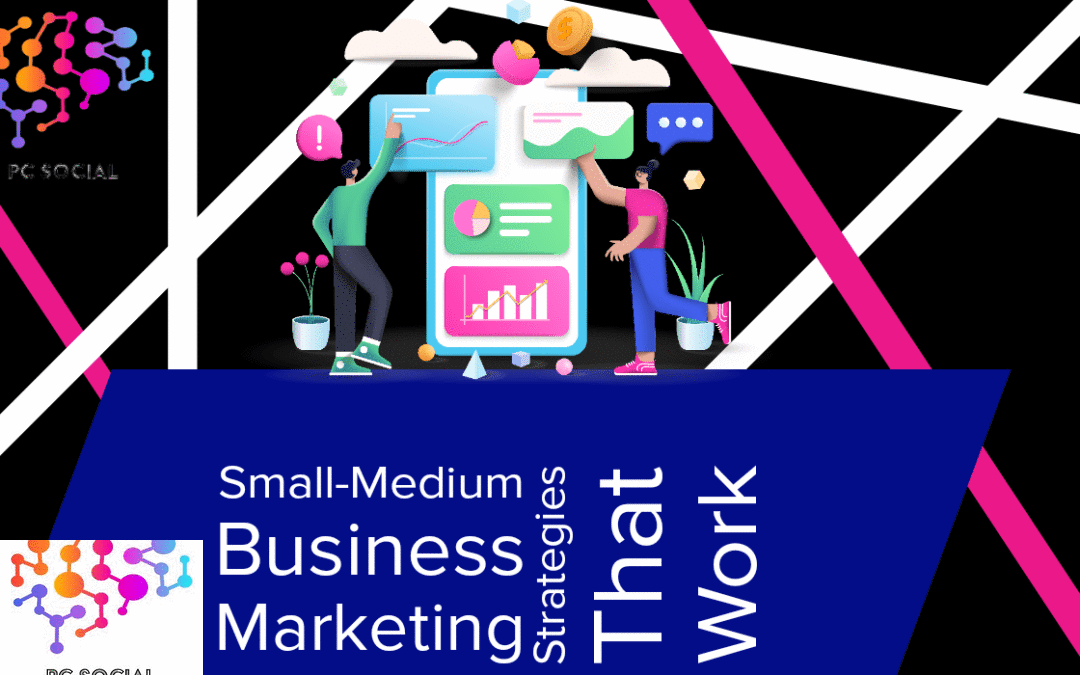
Small and Medium Businesses: Marketing Strategies That Work
If you’re a small company with limited marketing efforts, you can easily get drowned out by the noise from other small businesses fighting for attention. That’s why we offer a …
2021
November 17

DATA SCIENCE: The Basics (Infographics)
Simplifying Data Science for business. We present the data in a visual and easy to understand way. Every Brand Needs a Smart Business Strategy That is Powered by Data Science.
2021
November 15

Influencer Marketing: Social Media Influence
Influencer marketing is a social media marketing strategy that allows businesses to benefit from the credibility and influence of a social media user. These users, known as influencers, have a …
2021
November 08

Starting an Intelligent Marketing Strategy (Infographic)
Infographic setting up S.M.A.R.T goals. Specific, Measurable, Attainable, Relevant, Time-Bound
2021
November 04

Product Design Process (Infographic)
Explore the process of designing a product. Learn how to create something unique, valuable and functional! This infographic has all the information you need to get started with the design …
2021
November 03
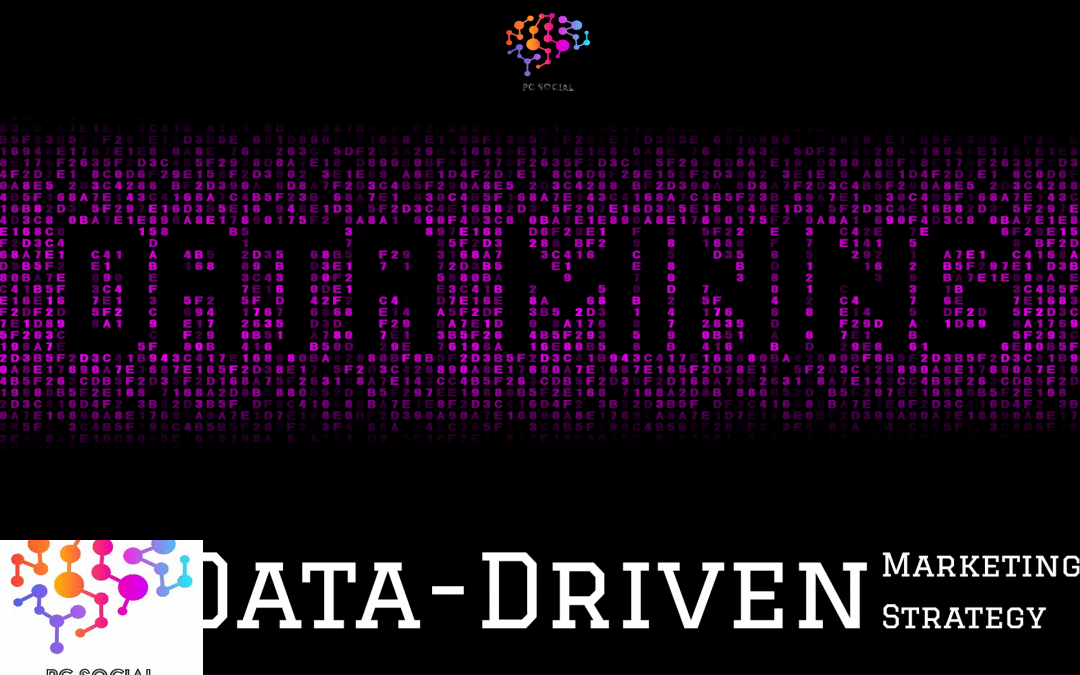
Starting A Data-Driven Marketing Strategy
Starting A Data-driven Marketing Strategy If you’re ready to start taking your marketing skills to the next level, it’s time you understand all there is to know about marketing data. Data …
2021
October 29
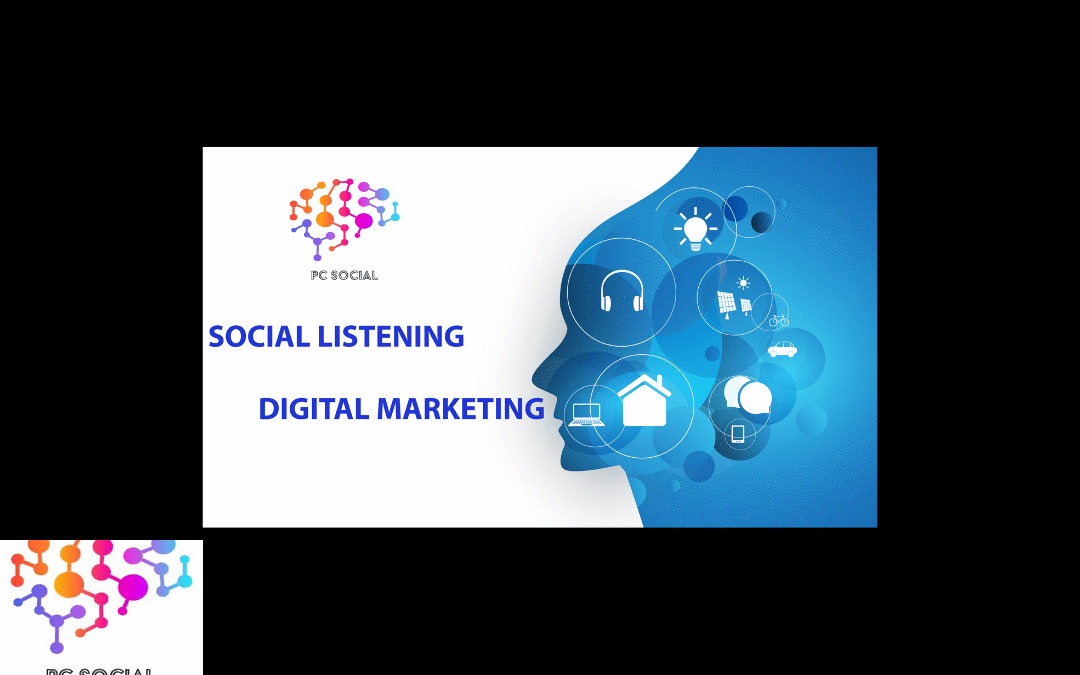
Social Listening – Digital Marketing (Infographic)
Social listening is the practice of listening to the conversations that people are having on social media (specifically Twitter) and reviewing conversations and posts to determine sentiment, the influencers and …
2021
September 11

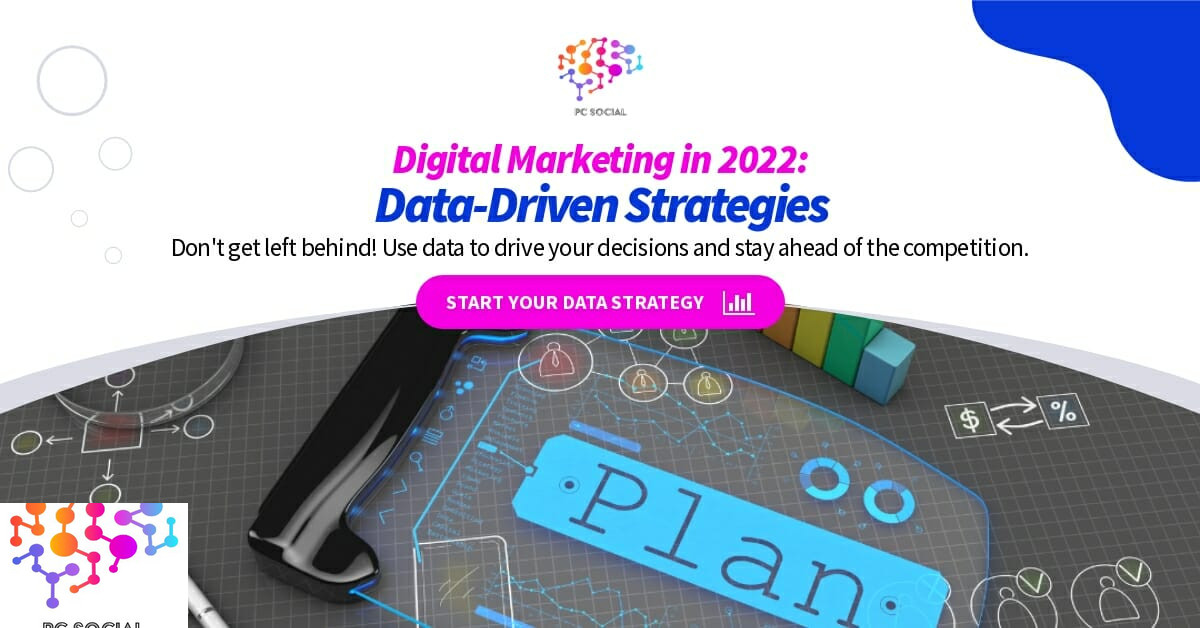



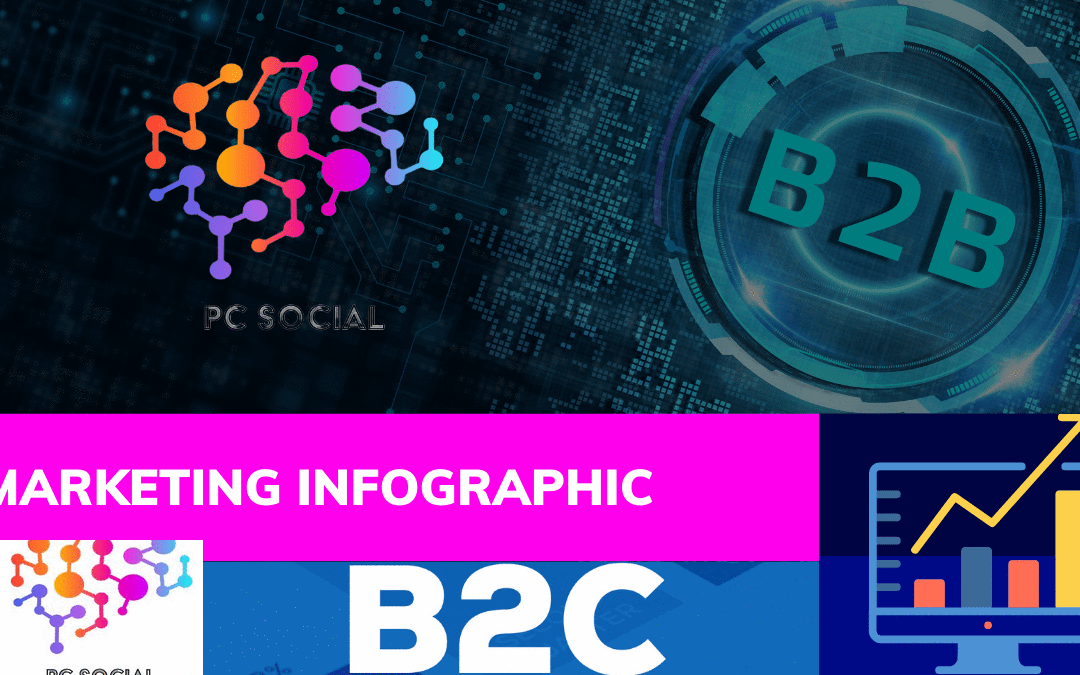
1 Comment
The Power of Data-Driven Content Marketing: How it Can Transform Your Business -
August 24, 2023[…] the ever-evolving landscape of modern marketing, data-driven strategies have become a powerful tool. Businesses can revolutionize their operations and achieve immense […]